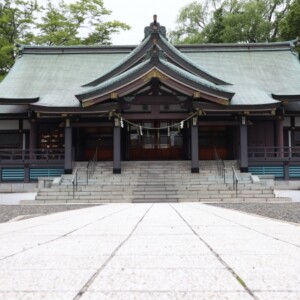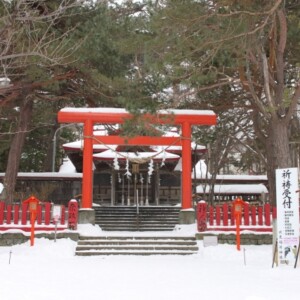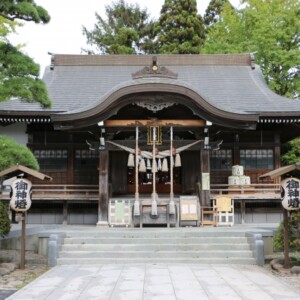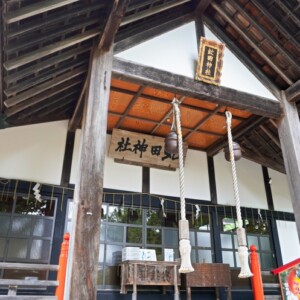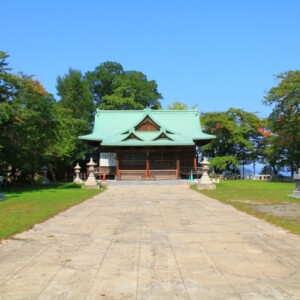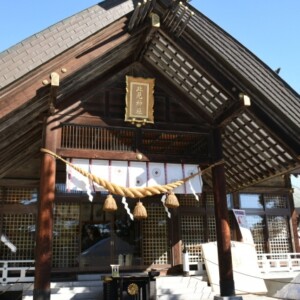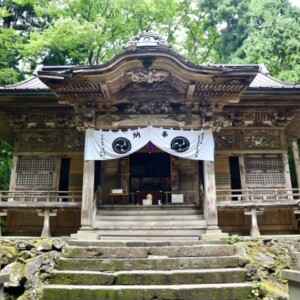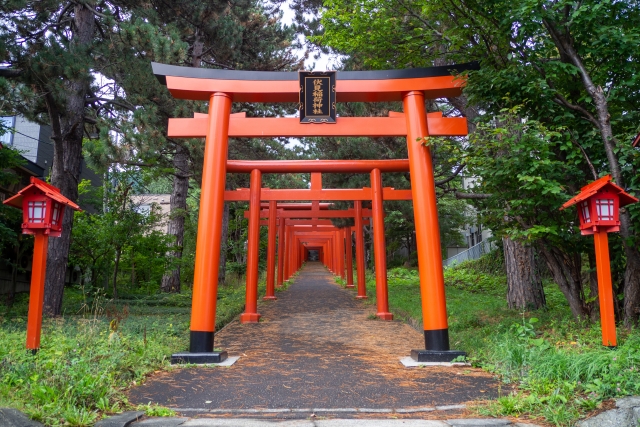
Sapporo Fushimi Inari Shrine|A Guide to Attractions and Worship at this Beautiful Power Spot in Hokkaido with 27 vermilion torii gates
Located at the foot of Mt. Moiwa in Sapporo, Hokkaido, Sapporo Fushimi Inari Shrine is known for its beautiful approach with 27 vermilion-lacquered torii gates. The shrine was built in 1884 as a shrine dedicated to a branch of the Fushimi Inari Taisha shrine in Kyoto, and is a well-known power spot that attracts many worshippers for the blessings of prosperous business and a good harvest. In particular, the “wishing stone” on the shrine grounds, which is said to grant wishes, is one of the most popular power spots in Sapporo.
Outline and basic information about Sapporo Fushimi Inari Shrine
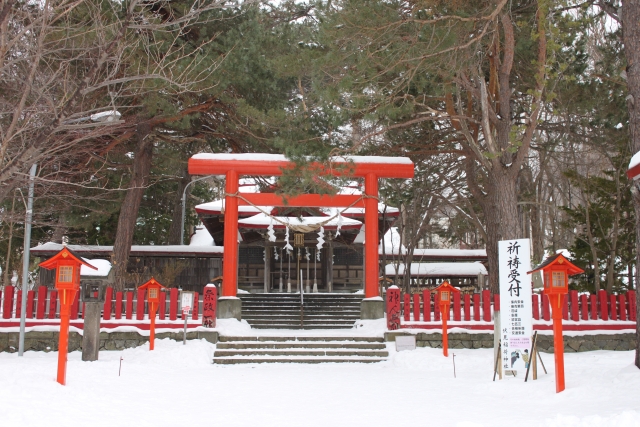
Sapporo Fushimi Inari Shrine is a historic shrine that began as a branch shrine of the Kanno-Taisha Inari Shrine (now Fushimi Inari Taisha Shrine) located in Fushimi-ku, Kyoto City, Kyoto Prefecture, enshrined in Minami 1-jo Higashi 1-chome, Sapporo Ward. The current name of the Fushimi area is also derived from the founding of this shrine, as it is recorded that this area came to be called “Fushimi” in accordance with the main government of Kyoto.
History and Origin
The history of Sapporo Fushimi Inari Shrine dates back to April 1877, when Shigeo Nomura I, a former senior priest of the Sapporo Shrine of the Grand Shrine of the Imperial Household, made a request to the former Inari Shrine of the Grand Shrine of the Imperial Household in Fushimi, Kyoto. The shrine was originally dedicated in Minami 5jo Higashi 1-chome, Sapporo Ward, but in March 1898, the shrine was moved to 12-ken in Kotoni Village, and in February 1907, the shrine was moved to its current location on Mt.
In February 1907, the shrine was relocated to its current location on Mt. In 1984, the shrine celebrated the 100th anniversary of its founding and has been improved with the times, including the expansion of the shrine office as a commemorative project.
Gods and Benefits
Sapporo Fushimi Inari Shrine enshrines five deities: Uganomitama no Mikoto, Oyamazuminomikoto, Okuninushi no Mikoto, Kotoshironomikoto, and Amadena no Mikoto.
The main deity, Kurainatami-no-mikoto, is widely worshipped as the ancestor of food, clothing, and shelter, and as the guardian deity of a good harvest, prosperity, and prosperity in business. Other deities, including Kurainatomi-no-mikoto, are believed to offer a wide range of blessings in response to the various wishes of people living in modern society, such as good luck at work, prayers for safety, prosperous business, and improvement of skills.
Sapporo Fushimi Inari Shrine Highlights and Features
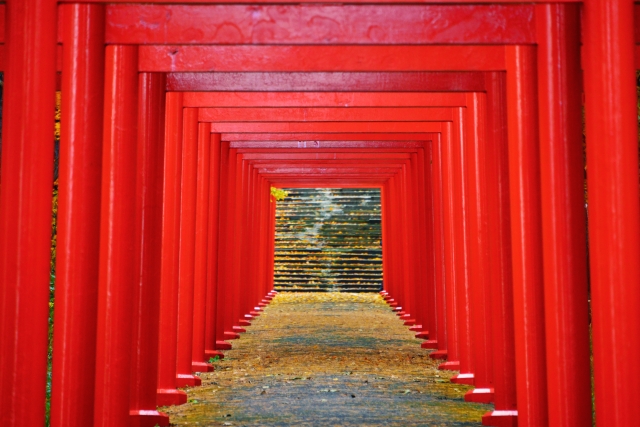
The main attraction of Sapporo Fushimi Inari Shrine is the perfect harmony of the beautiful vermilion torii approach, similar to that of the headquarters in Kyoto, the rich natural environment unique to Hokkaido, and the elements that make it a special power spot. Although located only 20 minutes by car from downtown Sapporo, the shrine is a sacred space that offers deep inspiration and healing to visitors.
Beautiful approach with 27 vermilion torii gates
The first thing that catches the eye of visitors to this shrine is the beautiful approach lined with vermilion-lacquered torii gates, 27 in all, just like those at the Fushimi Inari Taisha shrine in Kyoto. There are also seven other lanterns on the shrine grounds, which are lit at dusk, creating an even more magical scene.
Although smaller in scale than Kyoto’s Senbon-torii, the vermilion torii gates are exceptionally beautiful against the natural backdrop of Hokkaido, and they change their appearance from season to season. Especially in winter, the contrast between the whiteness of the snow and the vermilion of the torii gates is photogenic and beautiful, attracting many tourists from abroad to enjoy the scene.
Wishing Stone Power Spot
Of particular note in the temple grounds is the “wishing stone,” a stone that is said to make wishes come true. The stone has an interesting origin. It is recorded that in the late 1950s, one of the responsible officers of the shrine at the time saw the stone buried in the precincts with its head sticking out about 1/6 of the way, and told him to take good care of it because it was a “living stone”.
Later, when people who visited our shrine made a wish on this stone and prayed to it, their wishes were granted, and since then, the stone has been called a wishing stone. As a special etiquette when making a wish, it is also said that it is good to “refuse one of your favorite things” when making a wish.
Wishes can be expressed in the form of writing them on a “wishing stone guardian” and tying it next to the wishing stone before leaving, and many visitors come to the temple to make earnest wishes.
Rich natural environment at the foot of Mt.
Sapporo Fushimi Inari Shrine is located on a hill overlooking the city of Sapporo and is blessed with a rich natural environment. Moiwa, and the shrine is surrounded by beautiful natural scenery throughout the four seasons.
In spring, fresh greenery blooms, and the wisteria trellis at the Sapporo Fushimi Inari Shrine is in full bloom from early to mid-June. The beauty of each season welcomes visitors to the shrine: coolness at the foot of the deep green mountains in summer, autumn leaves in fall, and snowy landscape in winter. Another major attraction of the temple is its location overlooking the urban area of Sapporo, allowing visitors to worship peacefully in a tranquil environment away from the hustle and bustle of the urban area.
Guide to Worship
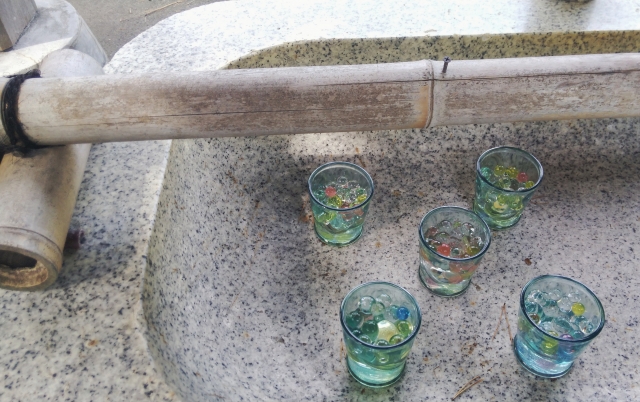
When visiting Sapporo Fushimi Inari Shrine, it is important to be aware that it is a sacred place and to observe good manners. Especially in recent years, with the increase in the number of worshippers, rules regarding photography have been established, so it is recommended to check them beforehand.
Worship Etiquette and Manners
Worship at Sapporo Fushimi Inari Shrine is conducted in accordance with the general manners of shrine visits. First, purify yourself at the water closet before heading to the main shrine. However, it is important to visit the shrine with purified hands, as the water may be turned off during the winter months because of the freezing temperatures in Hokkaido.
When visiting the shrine, the basic manner of worship is to bow two hands, clap two hands, and bow one hand. The original purpose of worship is to show gratitude and awe to the deity who is the festival’s deity. Please be careful to observe good manners and not to disturb others.
Of particular importance is the manner concerning photography. Sapporo Fushimi Inari Shrine prohibits the taking of photographs that may disturb other worshippers. Photography is generally prohibited on the shrine grounds, and commercial photography is completely prohibited. This is because of the problems caused by the nuisance of people obstructing the path of general visitors by taking over the approach to the shrine and obstructing the entry of cars by placing souvenir photo accessories on the approach to the shrine.
Annual and Seasonal Events
Various Shinto rituals and events are held throughout the year at Sapporo Fushimi Inari Shrine. The most important annual event is the annual festival, Yoimiya Matsuri, held on September 8, and the main festival on September 9, starting at 11:00 a.m.
The Yoimiya Festival is a quiet, solemn festival, with no fancy events or stalls, but it is a rare opportunity to experience the sacred atmosphere of the shrine. Vermilion flags are erected on the shrine grounds, and rituals are performed in a solemn atmosphere with the sounds of wrapped drums and other sounds.
Seasonal events include the Hanatemizu (in September), where visitors can enjoy the fantastic view of the temple illuminated at night. Also, in early February, the shrine will be lit up with candles, providing a beautiful contrast to the snowy landscape.
In addition, kitchen cars and marche events are held on the temple grounds on an irregular basis, and the “Fushimi Marche” featuring stores selling delicious foods and miscellaneous goods may also be held. Information on these events can be found on the official Facebook page as needed.
Red Seal and Good Luck Charm Information
Red seals can be obtained at the Sapporo Fushimi Inari Shrine and are available at the shrine office. The red seal service is available from 10:00 to 16:00, and you must call the person in charge at the shrine office. You can ask for both a red seal and an amulet at the shrine office.
Various types of good luck charms are available, such as the Amaterasu amulet for 1,000 yen, the Fushimi Inari Shrine amulet for 1,000 yen, and the charm for match-making and traffic safety for 1,500 yen. Since shrines do not do business, we do not say “buy” good luck charms, etc., but rather describe them as “given” as an award.
There is also a “Wish Stone Mamori” associated with the wish stone, in which you can write your wish and tie it next to the wish stone. A special etiquette for making a wish at this time is to “refuse one of your favorite things”.
The shrine office is open from 9:00 to 16:00, but may be closed depending on the time of day. If you want to be sure of getting a good-luck charm or a red seal, we recommend that you call in advance before visiting.
Access/Use Information
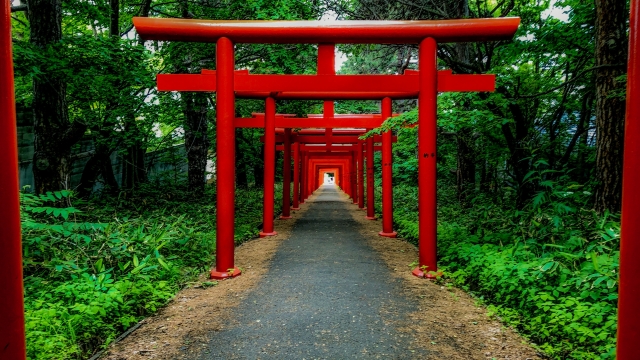
Sapporo Fushimi Inari Shrine is located approximately 20 minutes by car from downtown Sapporo and is accessible by public transportation. However, due to its location at the foot of the mountain, access by car is most convenient.
Access by Public Transportation
The most convenient way to reach Sapporo Fushimi Inari Shrine is by car. It takes about 20 minutes from the center of Sapporo, and the shrine has its own parking lot. If you set your destination in the car navigation system, you will arrive at the front of the shrine, but you will need to go around to the back of the shrine as there is no parking lot on the front side. If your car navigation system supports the map code “9 399 853*14”, you will be guided to the parking lot.
If you use public transportation, take the JR Hokkaido Bus “Circulation En10” or “Circulation En11” from Maruyama Bus Terminal at Maruyama Koen Station on the Subway Tozai Line, get off at the “Jikei-kai-mae” stop, and walk about 3 minutes (about 230 meters) to get there. Both of these buses are called “ropeway lines” and connect the Mt. Moiwa ropeway station and Maruyama Koen Station.
Circulation circle 10 and Circulation circle 11 have the same bus stops, but the order in which they stop differs in relation to the inner and outer buses. Circulation circle 10 arrives at Jikei-kai-mae a little earlier.
Other access options include a 20-25 minute walk (approx. 1 km, with a slope) from Sapporo City Tram Nishisen 14-jo Station, but this is recommended only for those who are physically fit, as it is a considerable uphill climb.
On the way back, you can return to Maruyama Koen Station by the same bus, but walking to Sapporo City Tram “Ropeway Entrance Station” or walking to “Moiwayama Ropeway” to enjoy the ropeway and then taking a shuttle bus to the tram station is recommended.
Hours of Admission, Fees, and Parking Information
Sapporo Fushimi Inari Shrine is open to the public all day long throughout the year and can be visited 24 hours a day. However, please note that it is dark underfoot at night. The shrine office is open from 9:00 am to 4:00 pm, and red seals are accepted from 10:00 am to 4:00 pm.
There is no admission fee, and anyone is free to visit the shrine.
Parking is available in the shrine’s free parking lot, which can accommodate approximately 10-15 cars. To get to the parking lot, drive along Moiwa-zanroku-dori from the Maruyama direction toward the Mt. The entrance to the parking lot is marked by a red sign that reads “Sapporo Fushimi Inari Shrine.
A signboard of PHENIX, a sportswear manufacturer, and a slender vermilion sign about 2 meters high that says “Fushimi Inari Shrine” vertically are landmarks on your way to the parking lot.
The shrine is a parking lot for worshippers, so please refrain from parking for long periods of time for purposes other than visiting the shrine. Also, since visiting the shrine does not take more than a few hours, the turnover is relatively quick, and there is a flow of people in and out even when the place is crowded.
<Address> 2-2-17 Fushimi, Chuo-ku, Sapporo, Hokkaido, 064-0942, Japan
Reference site
Fushimi Inari Shrine Official Website: https://fushimiinari.or.jp/
Sapporo Fushimi Inari Shrine Official Facebook: https://www.facebook.com/SapporoFushimiInariShrine/




